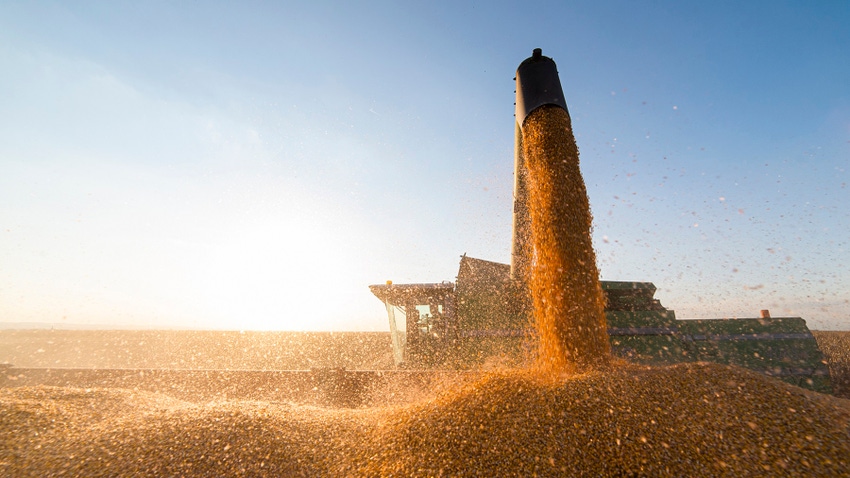
The January crop reports always seem to have some surprises and 2024 continued the trend as the USDA raised the final U.S. national yield to a record at 177.3 bushels per acre. This was higher than anyone in the trade thought the number would come in.
Some of the most significant yield revisions were:
Nebraska, which jumped from 173 bpa in November to 182 bpa
Missouri, increasing from 147 bpa to 153 bpa
Illinois came in at 206 bpa
Indiana came in at 203 bpa
Iowa came in at 201 bpa
The total U.S. corn supply increased by 106 million bushels. However, it was somewhat offset by a 50 million bushel increase in corn demand for ethanol and a 25 million bushel increase in feed and residual. Exports were left unchanged. U.S. carryout was raised to 2.162 billion bushels from 2.131 billion bushels in December. This was above expectations and the highest in five years. Not the direction the producers want to see to generate a rally.
The world corn situation isn't any better. USDA projected world corn ending stocks at 325.22 million tons versus 315.22 in December. The bulk of the upward revision was driven by a jump of 11.8 million tons in the Chinese corn crop.
Record-breaking global corn stocks?
If this projection comes to fruition, global stocks would be the highest in six years. This also likely explains why China remains absent in the U.S. export market and, unfortunately, will stay absent unless the safrinha crop in Brazil falters dramatically.
A slip in Brazil’s safrinha production still could happen as planting has not started. With all the rain they are presently receiving, the crop could be planted late, leading to the crop running out of moisture at the end of the growing season if the rainy season runs in the normal course or ends early.
Earlier this week, commodity analyst Michael Cordonnier lowered his Brazilian corn production forecast to 115 mmt, a 2-mmt drop that puts it well below the latest USDA forecast of 127 mmt and even below Conab's estimate of 117.6 mmt.
For Argentina, Cordonnier raised his estimate 3 mmt to 56 mmt, just above the USDA forecast of 55 mmt. An analyst from the Rosario Grain Exchange recently suggested the Argentine corn crop has a good chance of topping 60 mmt, well above the previous record of 52 mmt. The previous record of the combined Brazil and Argentine crop was 185 mmt.
Use any rally when it pops
With both domestic and world supplies growing, we encourage producers to use any rallies that occur to market both old and new crop bushels. Our contacts in the cash industry tell us that producers are considerably undersold. This will likely cap rallies initially as producers will be forced to sell sooner rather than later to generate income and pay down debt before the next growing season.
With the cost of storing corn on the farm at roughly 3 cents a month, interest on storing grain into next summer will easily cost 0.18 cents. That storage cost will encourage producers to move grain to market. The only way to stop the interest cost of storing grain on the farm is not to store it.
Support for spot March 24 contract is at Friday's contract low of $4.41, with next support at $4.25. Resistance is at $4.60, followed by the 50-day M.A., which is currently $4.78.
If you have questions or would like specific recommendations for your operations, don't hesitate to contact me directly at 815-665-0461 or anyone on the AgMarket.Net team at 844-4AGMRKT.
The risk of loss in trading futures and/or options is substantial and each investor and/or trader must consider whether this is a suitable investment. AgMarket.Net is the Farm Division of John Stewart and Associates (JSA) based out of St Joe, MO and all futures and options trades are cleared through ADMIS in Chicago IL. This material has been prepared by an agent of JSA or a third party and is, or is in the nature of, a solicitation. By accepting this communication, you agree that you are an experienced user of the futures markets, capable of making independent trading decisions, and agree that you are not, and will not, rely solely on this communication in making trading decisions. Past performance, whether actual or indicated by simulated historical tests of strategies, is not indicative of future results. Trading information and advice is based on information taken from 3rd party sources that are believed to be reliable. We do not guarantee that such information is accurate or complete and it should not be relied upon as such. Trading advice reflects our good faith judgment at a specific time and is subject to change without notice. There is no guarantee that the advice we give will result in profitable trades. The services provided by JSA may not be available in all jurisdictions. It is possible that the country in which you are a resident prohibits us from opening and maintaining an account for you.
About the Author(s)
You May Also Like






